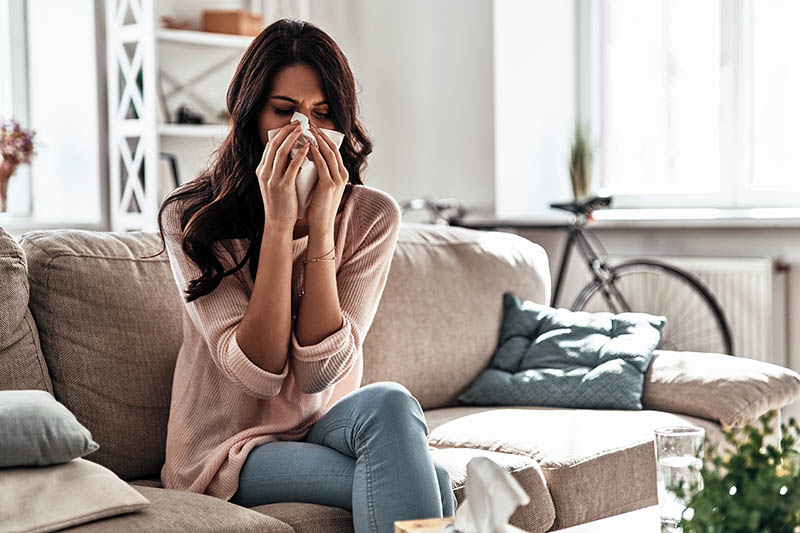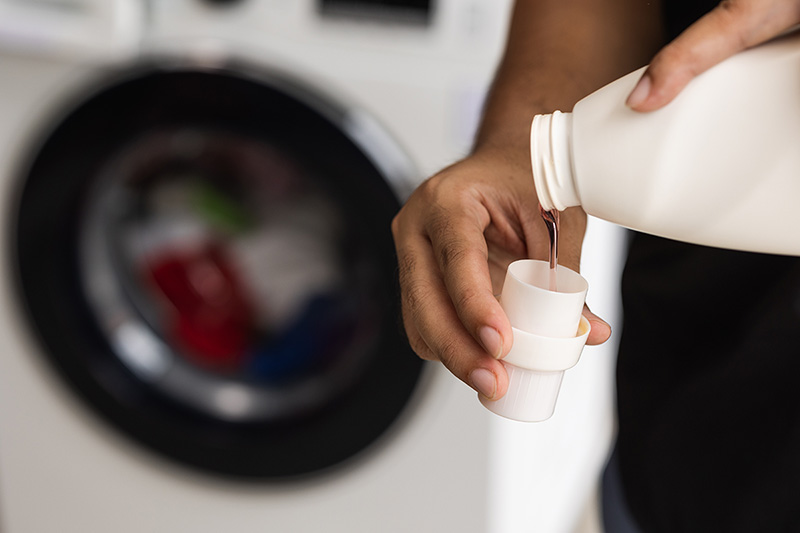Are There Allergens Lurking in Your Home and Causing Havoc?
Find out what contaminants might be present in your living space and how to get rid of them to breathe a little easier at home.

From red, watery eyes to a stuffed-up nose, allergies can be a pain. Identifying the cause of them can be even more frustrating. Over 50 million Americans experience some sort of allergies annually, so you aren’t alone if you experience allergies.
Even though it is so common, there are no cures for allergies, but you can rely on prevention and treatment strategies to alleviate some of the pesky symptoms. You can visit your healthcare provider to learn more about specific allergens and the reactions you are having.
But in the meantime, here are the basics of allergens in your home.
What are allergens?
An allergen is any type of substance that can cause an allergic reaction. If your body’s immune system perceives the presence of an allergen to be dangerous or foreign, it will produce an antibody in defense.
Some of the more common allergens include:
- Dust
- Fungal spores, including mold and mildew
- Mite and insect feces
- Animal dander and proteins
- Pollen
- Insect bites and venom
- Medications (oral and topical)
Reactions to allergens vary from person to person. For some, an allergen can cause respiratory symptoms, including coughing or congestion. For others, allergens can lead to more severe side effects, such as skin rashes or inflammation.
Allergies can cause a variety of symptoms:
- Itchy eyes and nose
- Sneezing and runny nose
- Hives and rashes
- Stomach cramps
- Bloating and diarrhea
- Redness
- Tongue swelling
- Coughing and wheezing
More severe cases of allergies can lead to lowered blood pressure, trouble breathing, and asthma attacks.
To play it safe, talking with your healthcare provider about your symptoms and concerns can help you identify things you need to avoid and if any treatments are available to provide some relief. Your provider may also refer you to an allergist. This is a specialty doctor who focuses on identifying and treating the allergies that are wreaking havoc on your life.
While you may instinctively believe that allergens are only outside of your home, you may be surprised to learn that there can be allergens lurking inside your home.
What allergens might be in your home?
There are a number of allergens that exist indoors such as dust mites, pet dander, cockroaches, mold, carpet, bedding, indoor plants, and soft furniture. If you notice that your allergies seem to flare up when you’re in your home, the presence of contaminants could be to blame.
Related: Is Your Laundry Detergent Causing That Skin Rash?
Here are three examples:
- Pollen can be tracked indoors and settle in the HVAC ducts, causing it to re-circulate in the air you breathe every time you run your heating or cooling system.
- If you have an infestation of insects, their feces and/or bites could cause allergic symptoms.
- Having pets in your home can also trigger an allergic response—even if your furry friend is hypoallergenic. It’s not the pet’s hair that is causing the concern, but pet dander and even saliva are particularly common allergens that can lead to a range of symptoms.
Some of the factors that impact the presence of allergens in the home include the cleaning frequency, age and type of home, and the regular temperature and humidity level. If you don’t dust regularly, you might notice more frequent flare-ups of allergies.
People who keep their windows open may also experience more allergic symptoms, as outdoor mold spores and pollen can drift through even fine mesh screens.
7 ways to eliminate indoor allergens
If you’re dealing with unpleasant symptoms when you’re in your home, indoor allergens could be to blame. Making some changes to your habits can help keep contaminants at bay.
- In your bedroom, try using covers on your pillows, mattress, and box springs that resist dust mites. Wash your bedding once a week in hot water and remove any feather- or wool-based materials, replacing them with allergen-friendly synthetic materials. If you have pets, keep them off your pillow and out of your bed.
- Vacuum and dust your rooms regularly.
- If you’re in the habit of keeping your windows open, try closing them while you sleep to avoid prolonged exposure to allergens. Instead, turn on the AC as it will help reduce the humidity, mold, and pollen in the air.
- Use exhaust fans as much as possible to remove humidity from the indoor air. Too much moisture in the air can increase the risk of mold and mildew growth, both of which can cause allergic reactions.
- Clean your kitchen often to get rid of food crumbs and use airtight storage containers to make the space less tempting for pests.
- If you do have pests, it’s important to eliminate them completely. As long as roaches, mites, and other insects are present, their feces and saliva could be causing significant symptoms. If you can’t get rid of the pests on your own, hire a professional to take care of the problem.
- Smoke is another allergen, so don’t allow anyone to smoke in or near your home.
Related: DIY Cleaning Schedule and Spray for a Healthy, Happy Home
You don’t have to suffer from allergic symptoms in your home. By making a few changes and keeping the space clean and free from dust and other common contaminants, you can improve your living space and enjoy cleaner indoor air. And don’t hesitate to get in contact with your healthcare provider with your questions and concerns.






